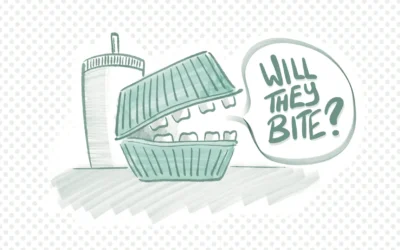Everything is more expensive these days. Groceries, utilities, housing —- it’s a wonder that any of us are managing to get by. But, why is everything so expensive? Here is a utility industry worker’s thoughts on the systemic reasons Albertans are struggling.
Alberta has a unique utility market within Canada which relies on an “energy only” model to balance supply and demand. The generation of electricity is privatized, so when demand goes up during a cold snap, the Alberta Electricity System Operator (AESO), the organization that overlooks Alberta’s power grid, monitors usage by consumers. AESO increases the market price for power, incentivizing generators to produce enough energy to meet demand. The cost of this incentivizing generation falls entirely on consumers and, unfortunately, we do not have the option to avoid using power during temperature extremes, even when prices skyrocket. The price of power has steadily increased over the last two years and has hit a record-breaking peak in August with 32.5 cents per kWh.
In Alberta’s market, generators are only paid for what they produce, regardless of how much it costs to make. Natural gas and coal plants cannot compete with the low cost of renewables which means two fundamentally different market segments operate with opposing profit strategies. Renewables like wind and solar are cheap to run once built, and generate as much as they are able to. When wind and solar are generating power, coal and gas plants may choose not to operate if prices are too low to cover their costs like staff, maintenance, and fuel. It’s only when demand spikes that the generators profit, so they intentionally delay generation to keep prices high for as long as possible. The Market Surveillance Administrator, an agency that advocates for fairness in the energy market, calls this strategy “economic withholding.”
Alberta got here by riding the wave of cheap coal. We weren’t forced into investing in cheaper dispatchable technologies (which can be turned on in times of high demand) the way other provinces were. Current battery technology isn’t anywhere close to where it would need to be for renewables to take over the bulk of the generation. The “Tell the Feds” campaign blamed environmental policies for the issue, but the carbon tax and carbon regulations are market solutions which is a match made in heaven for the ideology behind our market. Utilities are a provincial responsibility. If Alberta’s current market passes the burden of response onto the consumer, it’s not the feds who need to know.
In 2016, the AESO recommended changing Alberta’s current market to a capacity market. Capacity markets are used in many U.S. states. These markets allow the government to pay generators to wait on standby or generate baseline amounts which ultimately lowers the risks of outages and discourages high prices. In 2019, the UCP chose to cancel the switch as it came into power. The minister of energy, Sonya Savage said, “The response from industry to maintain an energy-only market was overwhelming, and this is yet another example of promise made, promise kept.”
January’s grid alert was caused by temperatures that are too cold for some of our gas plants to function. An outage was narrowly averted by importing power from B.C. and Saskatchewan’s government-owned monopolies.
Alberta’s affordability minister Nathan Neudorf said that paying generators to remain on standby is “expensive insurance.” Temperature extremes, flooding, and forest fires will continue to put pressure on our current market system. Will the energy-only market meet these challenges without placing high costs onto the consumer? We’ll see.
Groceries have also started to feel like a luxury. Canada’s Food Price Report is a collaboration of universities and academics who track changes to food costs and make predictions on food costs in the coming year. They state that, in 2024, Canadians are spending less on food, “by reducing the quantity or quality of food or substituting less expensive alternatives.”
The report also discusses increased food bank visits, with “2 million visits to food banks in Canada in 2023, the highest level of food bank use… on record.” The report addresses claims of “greedflation” by citing a Bank of Canada conclusion that the “recent rise in inflation was driven primarily by changes in costs rather than by firms leveraging their market power to increase prices.”
The report points to drought conditions, geopolitical conflicts, and perhaps most surprisingly, cyberattacks. Maple Leaf Foods experienced a ransomware attack in 2022, when a ransomware group known as Black Basta demanded a ransom to prevent the release of internal documents. While this may not be great news for our wallets, it could be great news for the job security of students pursuing positions in IT.
When former premier Jason Kenney announced the “Alberta is Calling” campaign, he promised well-paying jobs and affordable housing. As people fled high cost-of-living cities like Vancouver and Toronto, Alberta went from having relatively affordable housing to having one of the highest costs-of-living in the country. Inflation, rising interest rates, and investment properties also contribute to this affordability issue.
I reached out to Janis Irwin, an NDP MLA and housing critic, for comment. Irwin says,: “For almost a year, Alberta has been seeing the steepest rental increases in the country. My office regularly receives emails from everyday Albertans who are facing rental increases of 20, 30, even 50 per cent, and that is stretching household budgets to the breaking point. There are reports of people skipping meals to make ends meet, students dropping out of school or living in their cars.“
It’s safe to say the struggle is real, friends.





0 Comments